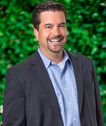Originally published in CPA Practice Advisor
The last year has come with unprecedented challenges but also brought great opportunities for innovation and growth. For small to mid-sized accounting firms, the workplace of the future will continue to evolve and look different than the past. How firms respond will become either a permanent setback or setup for long term success.
HYBRID WORK IS HERE TO STAY
The workplace has changed forever. Employees now go to the office for social interaction, team building, personal preference and comfort or to get back into routine, but they do not have to be in the office for all work. Organizations will thrive with a combination on onsite and remote working expectations. According to the 2020 Anytime, Anywhere Work Survey from management consulting firm Convergence Coaching, 81 percent of firms expect an increase in people working from home post-pandemic.
COVID-19 also disproved the notion that client-firm relationships require consistent face-to-face interaction. There is now an opportunity to serve clients from anywhere, at anytime, as well as expand talent pools geographically.
Working remotely is here to stay within a hybrid model. According to Gallup, employees’ optimal engagement occurs when they spend 60-80 percent of their time working remotely. The future will likely continue to be a combination of onsite and remote-work environments, and organizations need to adjust for this. Clients may not expect firms to physically be anywhere, and the need for in-person interaction will not always be essential to many job functions.
RELATIONSHIPS ARE MORE IMPORTANT THAN EVER
Interpersonal relationships will still play a role, however, and remain foundational to success. Prior to the pandemic, innovation largely focused on creating efficiencies, improving service delivery models and quality or leveraging resources. Today, firms will need to innovate how they communicate and interact.
The pandemic mandated a quick response to disruption, but it now provides the opportunity to open the world back up in a new way. To stay ahead of the curve, companies may need a new office environment that offers the flexibility to which people have become accustomed. Offices should have a full spectrum of uses in mind: larger open-collaboration spaces, places for socialization and even smaller spaces for independent working.
Protocols, frequency and transparency of communications — and the platforms for them — are also essential to a seamless remote-work environment and create a valuable client experience. Millennials, for example, continue to enter the workforce as Boomers retire, and each have different ways of connecting. Firms will have to adapt to new ways of communicating across generations just as much as geographies.
CONFIDENCE AND TRUST IS FOUNDATIONAL
Transparency of messaging and action as well as trust in people and culture, particularly when working remotely, is paramount to being successful in the future workplace. According to Great Place to Work, all companies that make their “Best Workplaces” list have high-trust cultures.
Through a client lens, the most successful firms previously had long-standing relationships, business contacts or a trusted brand identity in the marketplace to leverage. Now, there is a clear need to leverage expertise in niche areas to truly be an expert.
Firms must consider their digital footprint and build strong online brands through social media, websites and thought leadership. A silver lining of working remotely is that expert content can be created from anywhere and cast a wider audience. There is an opportunity to reach untapped areas by leveraging niche expertise. Historically this online presence was “nice to have” — now, it is a “need to have.”
LOOKING TOWARD A BRIGHT FUTURE
The world has changed more rapidly in the past 12 months than in the previous few decades. Small and mid-sized firms have the luxury of being more nimble than their larger counterparts. This creates a unique opportunity to be able to adapt quickly and compete for both business and talent.
As with anything else, a strategic plan serves as a beacon for the future. A new hybrid workplace will emerge from the pandemic that is built from innovation surrounding team development, relationship building, communication, engagement, collaboration and more. The future looks promising and full of opportunity.


